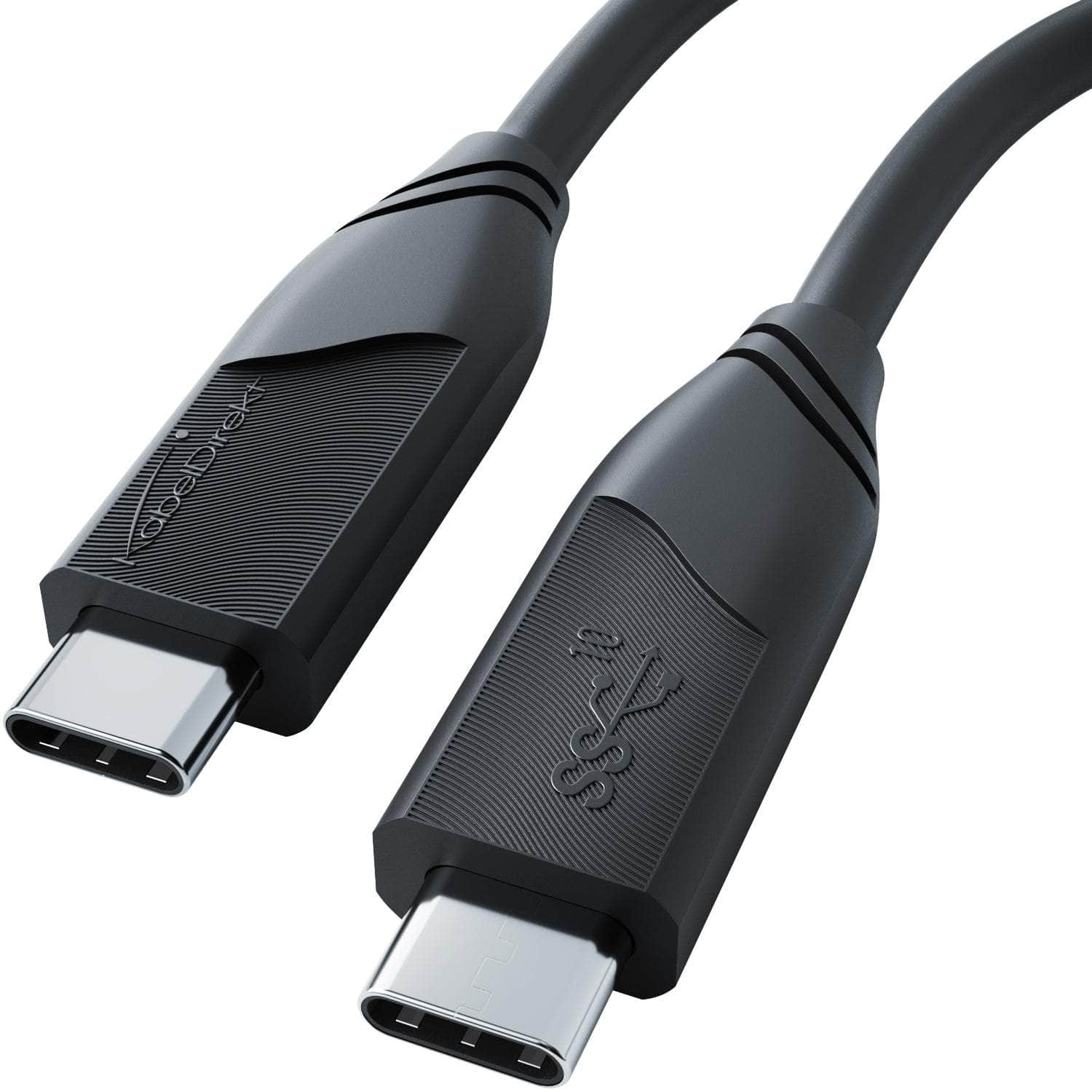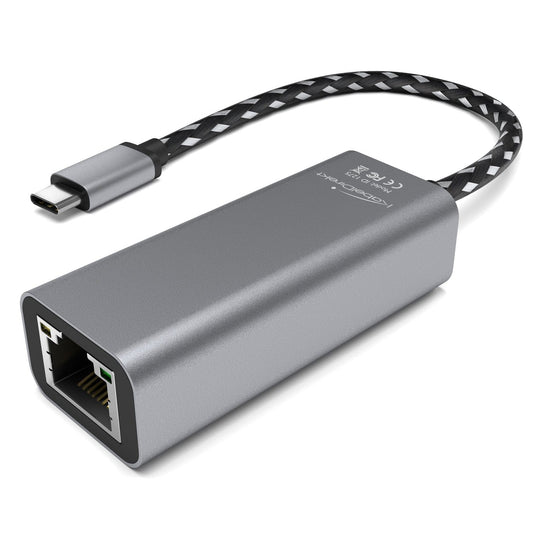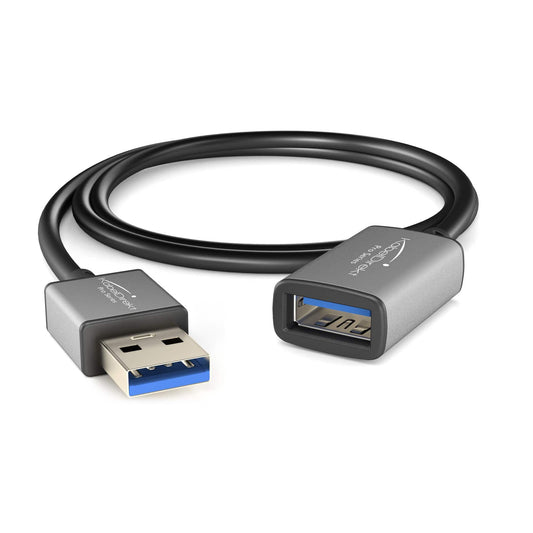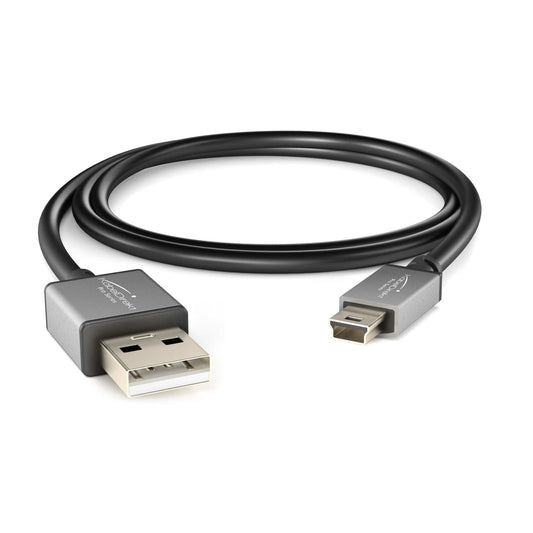USB & PC Kabel Kategorien
-

USB-C cable
USB-C cable - fast and versatile One cable for everything: USB has become indispensable...
-

USB adapters & hubs
USB accessories and - hubs, card readers, USB adapters
-
Power strips
Multi-socket power strips – power strips with USB charging ports
Übersicht unserer Produkte aus dem Bereich USB & PC Kabel
-
USB-C cable - USB 3.2, Power Delivery 3, black
Regular price From €10,92 EURRegular priceUnit price / per€10,92 EURSale price From €10,92 EURSold out -

USB-C Ethernet Adapter - For connecting network cables to devices with a USB-C port, 1 Gbps
Regular price €14,28 EURRegular priceUnit price / per€14,28 EURSale price €14,28 EURSold out -
 Sold out
Sold outUSB 3.0 extension cable
Regular price From €6,71 EURRegular priceUnit price / per€6,71 EURSale price From €6,71 EURSold out -
USB-C cable - USB 4.0, Power Delivery 3, Thunderbolt 4, black - 1m
Regular price €21,84 EURRegular priceUnit price / per€21,84 EURSale price €21,84 EURSold out -
USB-C to DisplayPort 1.4 adapter cable - 2m - for 8K at 60Hz
Regular price €18,48 EURRegular priceUnit price / per€18,48 EURSale price €18,48 EURSold out -
USB-C Hub - For connecting up to 4 devices with USB-A (USB-C plug)
Regular price €13,44 EURRegular priceUnit price / per€13,44 EURSale price €13,44 EURSold out -
USB-C cable - USB 3.2, Power Delivery 3, white
Regular price From €10,92 EURRegular priceUnit price / per€10,92 EURSale price From €10,92 EURSold out -
USB printer cable, USB 2.0, USB-B to USB-A
Regular price From €6,71 EURRegular priceUnit price / per€6,71 EURSale price From €6,71 EURSold out -
USB-C cable - USB 2.0, Power Delivery 3, black
Regular price From €6,71 EURRegular priceUnit price / per€6,71 EURSale price From €6,71 EURSold out -
USB-C to HDMI 2.1 adapter cable with metal connectors - 2 m - for 8K/60 Hz and 4K/120 Hz
Regular price €29,40 EURRegular priceUnit price / per€29,40 EURSale price €29,40 EURSold out -
USB-C to DisplayPort adapter cable - 2m - for 4K at 60Hz
Regular price €12,60 EURRegular priceUnit price / per€12,60 EURSale price €12,60 EURSold out -
USB-C cable - USB 2.0, Power Delivery 3, white
Regular price From €6,71 EURRegular priceUnit price / per€6,71 EURSale price From €6,71 EURSold out -
USB Extension Cable Optical USB 3.1 Gen2 up to 10Gbps
Regular price From €92,43 EURRegular priceUnit price / per€92,43 EURSale price From €92,43 EURSold out -
USB-C to DisplayPort 1.4 adapter for 8K/60 Hz or 4K/144 Hz
Regular price €15,12 EURRegular priceUnit price / per€15,12 EURSale price €15,12 EURSold out -
 Sold out
Sold outMini USB cable - USB 2.0, 1 m
Regular price €6,63 EURRegular priceUnit price / per€6,63 EURSale price €6,63 EURSold out -
USB-C OTG Adapter - For connecting USB devices to smartphones, tablets and notebooks with USB-C connection
Regular price €5,96 EURRegular priceUnit price / per€5,96 EURSale price €5,96 EURSold out
Collection: USB cables
USB cables, USB adapters and USB hubs
USB (abbreviation for "Universal Serial Bus") is the standard par excellence when it comes to transferring data from one device to another. The first version of the interface was introduced in the 1990s, but was not yet able to establish itself. Only with USB 2.0 did it replace the alternatives. Since then, the technology has become indispensable - and it has evolved considerably. USB cables and plugs are available in many different variants today and there are hardly any devices that are not compatible with USB.
Overview of USB cable types
Today we use five different USB standards, some of which still have subcategories. A few name changes in recent years have contributed to the fact that it is easy to lose track.
USB 2.0 : It is the oldest standard still in active use and therefore also the slowest. USB 2.0 transfers data at a speed of 480 megabits per second. By today's standards, where even short videos in full HD resolution reach gigabyte sizes, that's really not fast anymore.
USB 3.0: With up to 5 gigabits per second (Gbps), USB 3.0 transfers data in SuperSpeed mode much faster than the previous standard. Every reasonably modern computer has at least USB 3.0 ports.
USB 3.1: USB 3.1 is divided into Gen 1 and Gen 2, the former being nothing more than USB 3.0. However, the second generation is twice as fast: 10 gigabits per second (Gbps) can flow through the cable lines here.
USB 3.2 : The standard called Gen 2x2 offers a speed advantage over its predecessors with a maximum data transfer rate of 20 gigabits per second.
USB 4.0 : With the jump from USB 3.2 to 4.0, there has been another huge leap in data transfer speeds: from 20 to 40 gigabits per second.
The different types of USB connectors
As already mentioned, USB cables differ not only in which standard they comply with, but also in their connectors. There are more types of plugs (and accordingly also sockets) than one or the other might think, although not all of them are used regularly anymore.
USB-A: This is the normal, large USB plug, for which almost every computer has several suitable connections. The same applies to game consoles.
USB-B: The Type-B connector is narrower but taller than its USB-A counterpart. You probably know it from printers, since many of these devices have a suitable connection.
Mini-USB: This type of connector is not used that often anymore. Older digital cameras, MP3 players and the PlayStation 3 controller have a suitable connection.
Micro-USB: This type of USB connector is even smaller than mini-USB and has long been the standard in mobile devices. Accordingly, many smartphones and tablets have a micro-USB port for charging and data cables.
Micro-USB USB 3.0: This variant is wider than a normal micro-USB connector and is mainly used in conjunction with external hard drives.
USB-C : This is the modern standard in mobile devices and other portable hardware. Today's laptops/notebooks, smartphones/cell phones, the controllers of PlayStation 5, Xbox Series X/S and Nintendo Switch as well as more and more digital cameras come with a USB-C socket. The plug is twist-proof. In the meantime, not only data and electricity can be transmitted, but also video signals.
The right USB cable for every need
We offer a variety of USB cables for every purpose. Among other things, you can get various USB-C cables from USB 2.0 to 4.0 from us. They all support the Power Delivery 3 quick charging function, thanks to which you can fully charge the batteries of compatible devices with up to 100 watts in the shortest possible time. Thanks to the DisplayPort alt mode, you can use the USB 4.0 cables as video cables and they not only support Full HD, but also 4K and 8K, sometimes even when using two screens.
If you are looking for a USB printer cable, you will also find it with us. We also carry micro and mini USB cables that are compatible with older smartphones, tablets, cameras and external hard drives.
Our range also includes a whole range of adapters. Would you like to connect your laptop with a USB-C connection to a monitor with an HDMI or DisplayPort input to use a second, larger screen? We have the right adapters on offer that support resolutions of up to 4K at 60 Hertz. So-called OTG adapters are also available from us. The abbreviation stands for "On the Go" and the devices are used to connect, for example, memory expansions (USB sticks, external hard drives), but also keyboards, mice or gaming controllers to your smartphone or tablet. Since the cable is only 15 centimeters long, the whole thing is easy to do on the go. The OTG adapters are available with both micro-USB and USB-C connectors.
If you would like to connect several peripheral devices with a USB-A connection to your PC, laptop or tablet, a USB-C hub can help. Thanks to USB 3.0, a data transfer rate of 5 gigabits per second is possible and thanks to four USB-A inputs, you can connect a mouse, keyboard, a USB headset and a webcam, for example, at the same time.
If you want to integrate a mobile device with a USB-C connection into your LAN, we offer suitable Ethernet adapters that support a data transfer speed of 1 gigabit per second. Of course, you will also find extension cables in our shop that comply with the USB 3.0 standard and can therefore transfer data extremely quickly (provided the cable you are extending does not work slower). The USB cable extension is available with a length of up to 2 meters.
Frequently asked questions about USB cables
Is Micro-USB the same as USB-C?
Micro-USB and USB-C are different connector types. The latter is about to completely replace Micro-USB. It has already become standard on modern mobile devices. This is also due to the fact that the latest USB standards, i.e. USB 3.2 Gen 2x2 and USB 4.0, are only supported by USB-C cables and sockets.
What are USB-A and USB-C?
USB-A and USB-C are the most common plug and socket types when it comes to USB today. USB-A is mainly used in stationary hardware such as PCs and game consoles, while USB-C has become the standard in modern portable devices. Since only the latter supports USB 3.2 Gen 2x2 and USB 4.0, it should gradually replace USB-A completely.
Which cable do you need to connect printer and laptop?
If your printer does not support Bluetooth or WLAN, you will need a USB printer cable. This usually has a USB-B connector that you plug into the appropriate port on the printer, and a USB-A connector on the other end. If your laptop does not have a USB-A socket and is instead USB-C-compatible, a corresponding adapter cable is required. In this case you can also use our USB-C hub and then have three more connections available, for example to use a mouse, keyboard and external hard drive.
Is it possible to connect USB to HDMI?
Indeed, if you have a device with a USB-C port, it is possible to connect it to a screen with an HDMI input via an adapter. Our adapter supports resolutions of up to 4K at 60 Hertz.


















